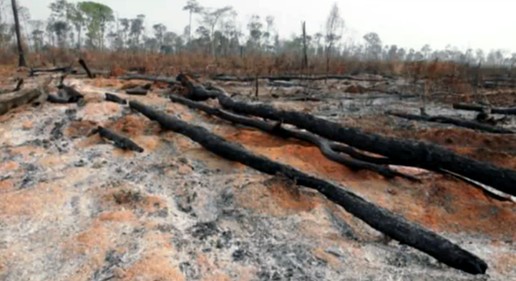Deforestation
All rainforests are under threat from human activity at the present time. They are being destroyed at an alarming rate that could potentially lead to many different types of environmental catastrophe, not only in the local forest zone, but globally. The greatest threats come from deforestation (tree removal by various means and for various purposes) and mining.
Deforestation is the loss or continual degradation of forest of forest habitat due to either natural or human related causes. Agriculture, urban sprawl, unsustainable forestry practices, mining, and petroleum exploration all contribute to human caused deforestation. Natural deforestation can be linked to tourisms, forest fires, volcanic eruption, glaciations and desertification. The effects of human related deforestation can be mitigated through environmentally sustainable practices that reduce permanent destruction of forests or even act to preserve and rehabilitate disrupted forestland.

Deforestation defined broadly can include not only conversion to non-forest, but also degradation that reduces forest quality - the density and structure of the trees, the ecological services supplied, the biomass of plants and animals, the species diversity and the genetic diversity.
Deforestation may be done to create farmland, to build hydro-electric plant, to sell the timber, or through careless or accidental burning. Rainforest microbes are extremely efficient at breaking down and recycling waste organic matter- the leaf litter and layers of detritus on the ground. As a result, almost no nutrients reach the forest soil and it is consequently poor. Removal of the trees allows the soil to dry out and the little humans that exist to deteriorate. This causes the rainforest microbes to die and the soil becomes largely inert, biologically. The degraded soil is also prone to erosion by wind and when land floods, it can be washed away.
Deforestation Definition
Deforestation is defined as land degradation in arid, semi-arid, and sub-humid areas resulting from various factors including climatic variations and human activities.
The conversion of forested areas to non-forested, i.e. this meant conversion to Greenland or to its artificial counterpart, grain fields; however, the Industrial Revolution added urbanization and technological uses. Generally this removal or destruction of significant areas of forest cover has resulted in a degraded environment with reduced biodiversity. In developing countries, massive deforestation has accompanied mankind's progress since the Neolithic, and has shaped climate and geography.
The effects of deforestation can be categorized in three ways. They are: environmental effects, local social effects, and global social effects.
Environmental Effects due to Deforestation
1. Effects on Biodiversity
2. Climate Change
3. Desiccation of previously moist forest soil
4. Dramatic Increase in Temperature Extremes
5. Moist Humid Region Changes to Desert
6. No Recycling of Water
7. Less Carbon Dioxide and Nitrogen Exchange
8. More Desertification
9. Soil Erosion
Deforestation Impact on the Environment
Deforestation alerts the hydrologic cycle, potentially increasing or decreasing the amount of water in the soil and ground water and the moisture in the atmosphere. Forests support considerable biodiversity. Forests are valuable habitat for wild mushrooms medicinal conservation and the recharge of aquifers. With forest biotopes a major, irreplaceable source of new drugs (like taxol) and genetic variations (such a crop resistance) is lost irretrievably.
Shrinking forest cover lessons the landscape's capacity to intercept, retain and transport precipitation. Instead of trapping precipitation, which then percolates to groundwater systems, deforested areas becomes sources of surface water runoff, which moves much faster than subsurface flows. That quicker transport of surface water can translate into flash flooding and more localized floods, than would occur with the forest cover. Deforestation also contributes to decreased evapotranspiration, which lessons atmospheric moisture which in some causes affects precipitation levels downwind from the deforested area, as water is not recycled to downwind forests, but is lost in return off and returns directly to the oceans.
Long-term gains can be obtained by managing forest lands substantially to maintain both forest cover and provide a biodegradable renewable resource. Forests are also important stores of organic carbon, and forests can extract carbon dioxide and pollutants from the air, thus contributing to biosphere stability and probably relevant to the greenhouse effect. Forests are also valued for their aesthetic beauty and as a cultural resource and tourist's attraction.
Average Acceleration Calculator
Average acceleration is the object's change in speed for a specific given time period. ...
When an object falls into the ground due to planet's own gravitational force is known a...
In Mathematics, the permutation can be explained as the arrangement of objects in a particular order. It is an ordered...
A rectangle can be explained as a 4-sided quadrilateral which contains equal opposite sides. In a rectangle
A three sided polygon which has three vertices and three angles is called a triangle. Equilateral triangle...






